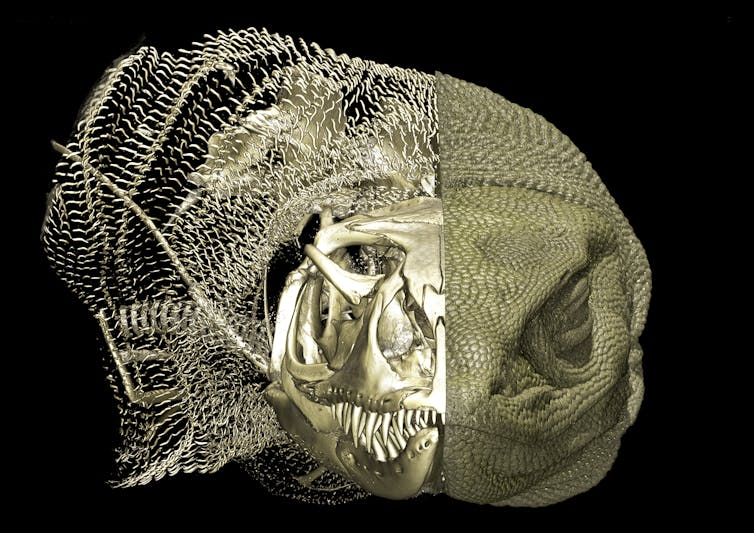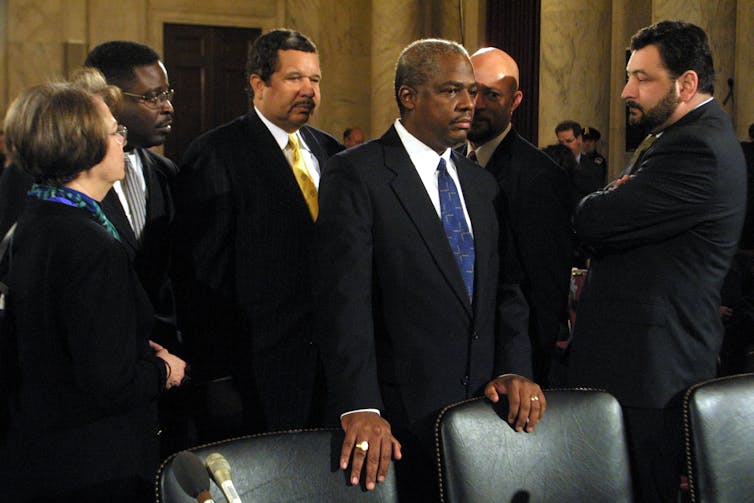Source: The Conversation – Global Perspectives – By Amra Lee, PhD candidate in Protection of Civilians, Australian National University
Australia has joined 28 international partners in calling for an immediate end to the war in Gaza and a lifting of all restrictions on food and medical supplies.
Foreign Minister Penny Wong, along with counterparts from countries including the United Kingdom, France and Canada, has signed a joint statement demanding Israel complies with its obligations under international humanitarian law.
The statement condemns Israel for what it calls “the drip feeding of aid and the inhumane killing of civilians” seeking “their most basic need” of water and food, saying:
The suffering of civilians in Gaza has reached new depths. The Israeli government’s aid delivery model is dangerous, fuels instability and deprives Gazans of human dignity […] It is horrifying that over 800 Palestinians have been killed while seeking aid.
Weapon of war
Gazans, including malnourished mothers denied baby formula, face impossible choices as Israel intensifies its use of starvation as a weapon of war.
In Gaza, survival requires negotiating what the United Nations calls aid “death traps”.
According to the UN, 875 Gazans have been killed – many of them shot – while seeking food since the US-backed Gaza Humanitarian Foundation began operating in late May. Another 4,000 have been injured.
More than 170 humanitarian groups have called for the food hubs to be shut down.
Gaza has been described as the “hungriest place on Earth”, with aid trucks being held at the border and the United States destroying around 500 tonnes of emergency food because it was just out of date.
More than two million people are at critical risk of famine. The World Food Programme estimates 90,000 women and children require urgent treatment for malnutrition.
Nineteen Palestinians have starved to death in recent days, according to local health authorities.
We can’t say we didn’t know
After the breakdown of the January ceasefire, Israel implemented a humanitarian blockade on the Gaza Strip. Following mounting international pressure, limited aid was permitted and the controversial Gaza Humanitarian Foundation began operations.
As anticipated, only a fraction of the aid has been distributed.
About 1,600 trucks entered Gaza between May 19 and July 14, well below the 630 trucks needed every day to feed the population.
Israeli ministers have publicly called for food and fuel reserves to be bombed to starve the Palestinian people – a clear war crime – to pressure Hamas to release Israeli hostages.
Famine expert Alex De Waal says Israel’s starvation strategy constitutes a dangerous weakening of international law. It also disrupts norms aimed at preventing hunger being used as a weapon of war:
operations like the Gaza Humanitarian Foundation are a big crack in these principles [that is] not going to save Gaza from mass starvation.
Palestinian organisations were the first to raise the alarm over Israel’s plans to impose controls over aid distribution.
UN Relief Chief Tom Fletcher briefed the UN Security Council in May, warning of the world’s collective failure to call out the scale of violations of international law as they were being committed:
Israel is deliberately and unashamedly imposing inhumane conditions on civilians in the occupied Palestinian territory.
Since then, clear and unequivocal warnings of the compounding risks of genocide, war crimes, crimes against humanity and ethnic cleansing have intensified from the UN, member states and international law experts.
Weaponising aid
The Gaza Humanitarian Foundation claims it has handed out millions of meals since it began operating in the strip in May. But the UN has called the distribution model “inherently unsafe”.
Near-daily shootings have occurred since the militarised aid hubs began operating. Malnourished Palestinians risking death to feed their families are trekking long distances to reach the small number of distribution sites.
While the foundation denies people are being shot, the UN has called the aid delivery mechanism a “deliberate attempt to weaponise aid” that fails to comply with humanitarian principles and risks further war crimes.
Jewish Physicians for Human Rights has rejected the aid’s “humanitarian” characterisation, stating it “is what systematic harm to human beings looks like”.
Human rights and legal organisations are calling for all involved to be held accountable for complicity in war crimes that “exposes all those who enable or profit from it to real risk of prosecution”.
Mounting world action
Today’s joint statement follows growing anger and frustration in Western countries over the lack of political pressure on Israel to end the suffering in Gaza.
Polling in May showed more than 80% of Australians opposed Israel’s denial of aid as unjustifiable and wanted to see Australia doing more to support civilians in Gaza.
Last week’s meeting of the Hague Group of nations shows more collective concrete action is being taken to exert pressure and uphold international law.
Th 12 member states agreed to a range of diplomatic, legal and economic measures, including a ban on ships transporting arms to Israel.
The time for humanity is now
States will continue to face increased international and domestic pressure to take stronger action to influence Israel’s conduct as more Gazans are killed, injured and stripped of their dignity in an engineered famine.
This moment in Gaza is unprecedented in terms of our knowledge of the scale and gravity of violations being perpetrated and what failing to act means for Palestinians and our shared humanity.
Now is the time to exert diplomatic, legal and economic pressure on Israel to change course.
History tells us we need to act now – international law and our collective moral conscience requires it.
![]()
Amra Lee does not work for, consult, own shares in or receive funding from any company or organisation that would benefit from this article, and has disclosed no relevant affiliations beyond their academic appointment.
– ref. Suffering in Gaza reaches ‘new depths’ – Australia condemns ‘inhumane killing’ of Palestinians – https://theconversation.com/suffering-in-gaza-reaches-new-depths-australia-condemns-inhumane-killing-of-palestinians-261547


















